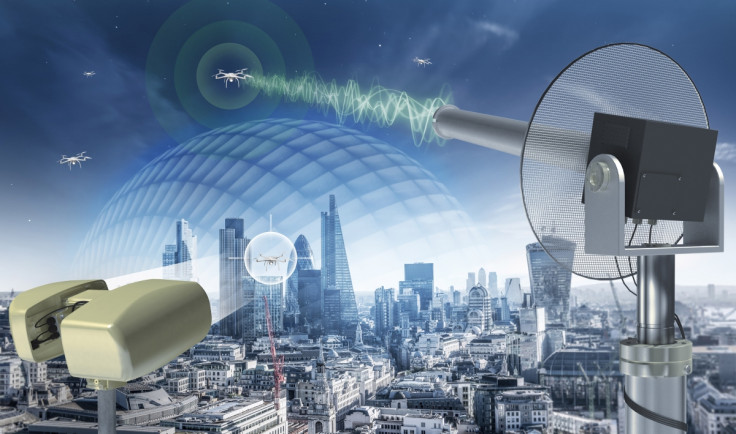Falcon Shield: How to get rid of consumer drones without shooting them down

UK defence firm Selex ES has developed a system that manipulates electromagnetics to take control of consumer drones, so that they can be landed out of the way without damaging them.
Incidents of civilians flying consumer drones where they shouldn't are becoming more frequent by the day, with consumer drones only narrowly avoiding commercial airplanes, as well as preventing helicopters from putting out forest fires and pursuing suspects.
While many of these incidents might be purely down to ignorance and foolishness, governments are starting to worry about what would happen if things were to get worse – in particular the US military, which is concerned that unmanned aerial vehicles (UAV) could be used by both domestic and foreign terrorists to attack American assets.
In fact, at a military technology conference held in Virginia in January 2015, US government officials showed a video of an army exercise where a fleet of UAVs worth $5,000 (£3,227.47) armed with guns were pitted against a convoy of armoured vehicles, with the result being that the drones beat the tanks.
Seizing control of drones without hacking them
At the moment, the only real way to get rid of a drone is to shoot it down, harass the owner of the drone to make them go away, or find security vulnerabilities in the firmware being used by the UAV and use that to hack into the drone and hijack it.
So instead, Selex ES, which recently celebrated 100 years of expertise in electronic warfare, has spent three years working on a different way to disable drones.
Their system, the Falcon Shield, makes use of radar, thermal imaging cameras and a multitude of electro-optical sensors to monitor and geo-locate the radio emissions being broadcast by a consumer UAV, while a computerised system carries out pre-determined actions to either halt drones in their tracks or alert the user to the potential danger.
The firm can't go into a great deal of detail due to proprietary classified technology developed in conjunction with military customers, but says that drones can be detected, taken over and then flown to land safely away from the target being protected.
"Electronic warfare is the ability to control the electromagnetic spectrum. It's about passively sensing an enemy target using radio frequencies so that the enemy doesn't know you know they are there, and then finding a way to counter that target," Stephen Williams, capability manager for the Falcon Shield division at Selex ES told IBTimes UK.
"We are pushing the boundaries of science, so we don't need to use a kinetic force against a drone, shoot it out of the air or hack into it. You can think of it as we're exploiting the radar technologies used by the Royal Air Force, and there is no reason for the software or hardware of the drone to be harmed, or for there to be collateral damage to people on the ground."
Protecting buildings, moving convoys and battlefields

Without giving too much away, Selex ES was able to confirm that the Falcon Shield solution is scalable, so it has the capability to cover and protect one building in the middle of a city, or a much larger area like a nuclear power plant, an air field or even an overseas military base.
The system can be mounted on a building's rooftop, but it can also be stationed on an armoured vehicle in a moving convoy, and is portable enough to be picked up and carried to a new location.
After a drunk man crashed a DJI Phantom drone on the lawn of the White House in January, security experts and the military started talking about what they would do in the event that a terrorist decided to fly a drone carrying a bomb at a fast speed with the intent of having it blow up the White House.
As the incident with the drunk UAV pilot showed, it would be difficult to prevent a small flying vehicle before it was too late, and the US Secret Service came up with the idea to test out flying its own drones, that could be deployed to identify and disable enemy UAVs before they got too close to important buildings.
Selex ES can't reveal how big or small an area the Falcon Shield can cover, but the idea is that the system will alert the user that a drone is approaching from as far away as possible, so that the user has enough time to decide what strategy to take.
The system can be automated to automatically deal with fast approaching UAVs, disabling them and landing them in a pre-designated spot, but in the case of a complex battlefield situation like the US battle simulation between the tanks and drones, a commander could use the system to execute various strategies at once to disable and move the drones out of the way.
Selex ES intends for the Falcon Shield system to be used by law enforcement and civilian security, in addition to the military, and the solution is designed to be left by itself for 24-hour monitoring.
© Copyright IBTimes 2025. All rights reserved.






















